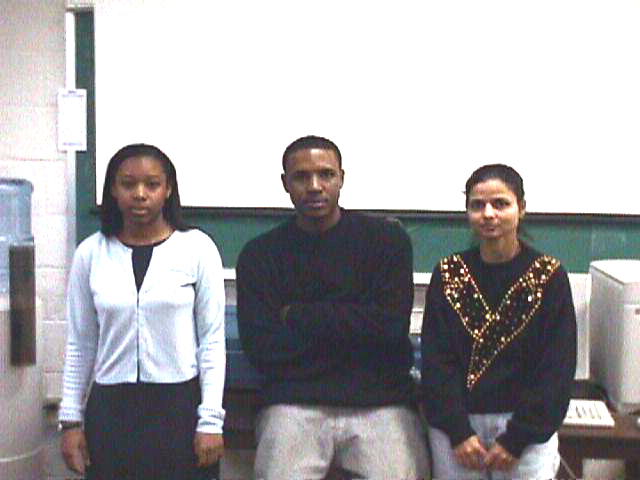Keisha Harrison, Gary Cordon, and Ravinder Kaur

Scientific visualization is an evolving techology that allows scientist
to understand and interpret the meaning of hundreds of thousands of pieces
of information in a visual form. Through the use of multi-dimensional,
animated depictions of their data, researchers are able to view previously
unobservable information. Many sciences are best explained using
visualization to illustrate a concept.
Scientific Visualization helps the researcher to solve problems and to
explain a particular concept to the general public. Visualization
requires that the researcher interpret data and present it in a form that
the general audience may understand.
Scientific Visualization helps present ordinarilly abstrat data in a new
and innovative way. By using these techniques, more information is made
accessible, therefore improving general comprehension of the task
at hand and giving a new perspective to the problem.
The Visualization team has been learning these techniques by using the
infrared image data in GVAR (GOES VARiable) format. This information is
collected from the Geostationary Operational Environmental Satellite, or,
more simply "GOES 8", using a satellite dish. The Visualization team here at
ECSU will be using these techniques for the use of storm tracking.
The weather satellite images that you see on the broadcast TV news each day
(or, if you have cable TV, on The Weather Channel) are created from data
that is transmitted by the GOES Satellite. THe GVAR system was designed to
allow students from elementary to the college level to view this data. The
GVAR system collects all of the data from the GOES satellite and converts it
into a form that can be viewed and interpreted by the students.
Getting the GVAR system to work here at ECSU was no easy task. The visualiztion
team had to first install the satellite dish on the roof. Then install
all of the software, and configure the hardware.




